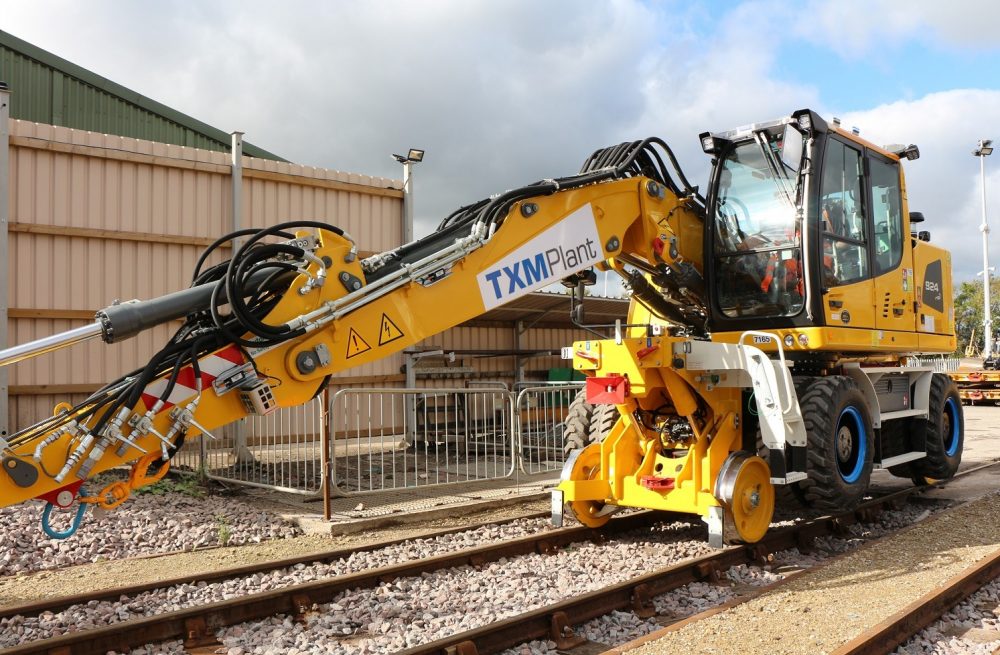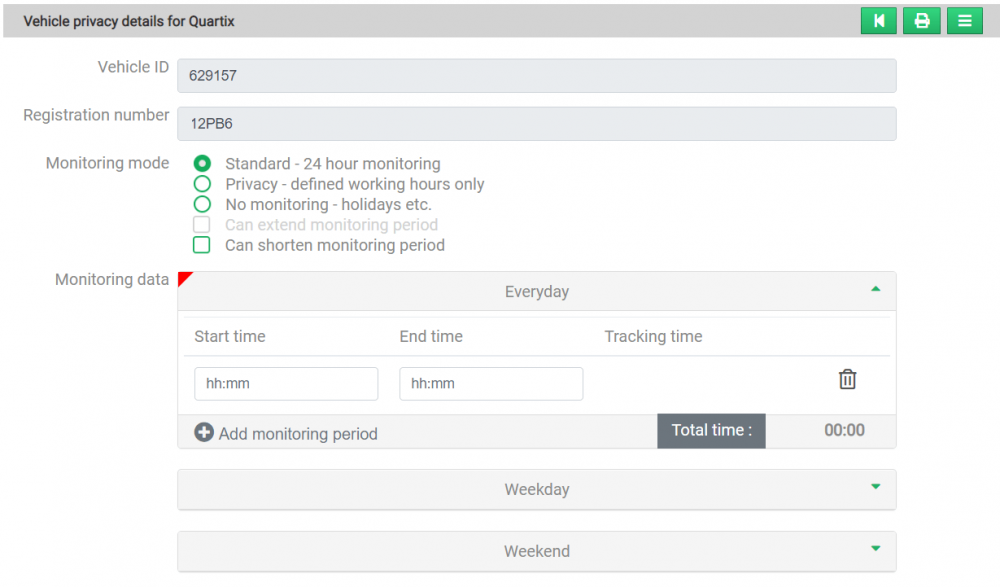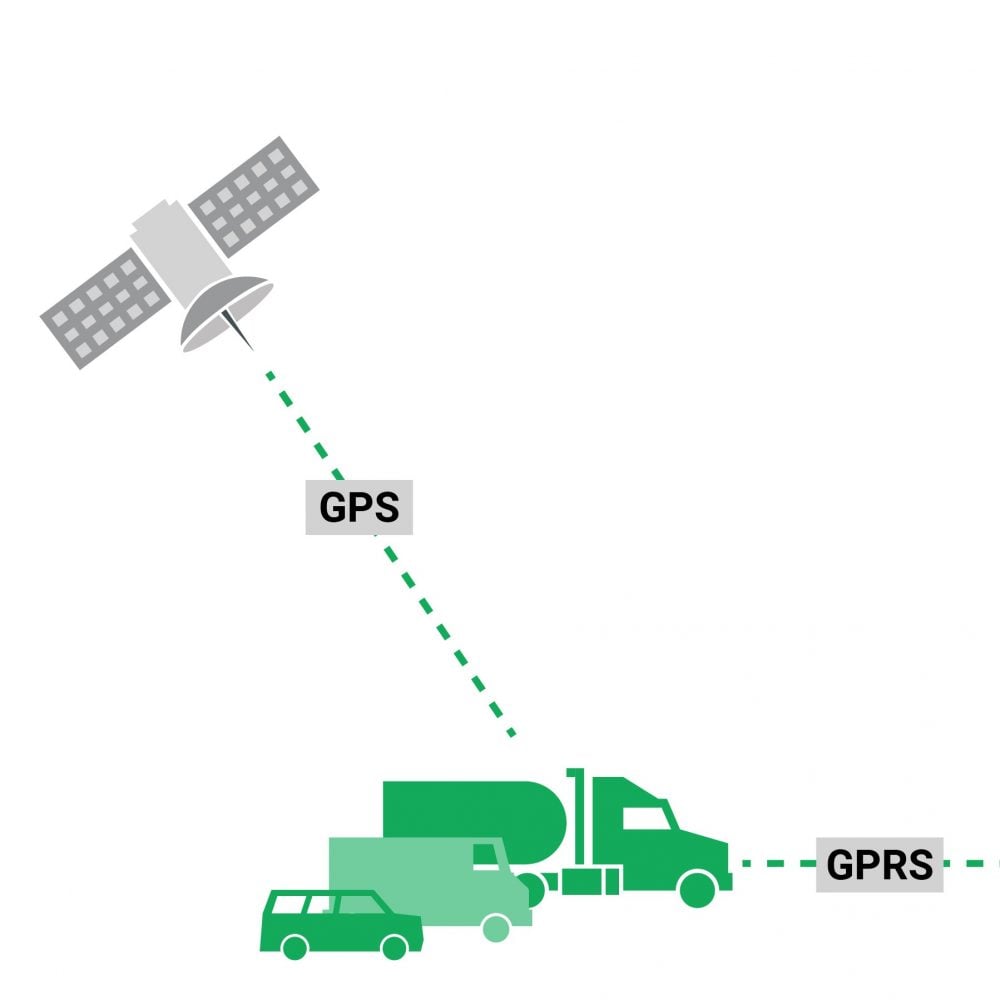Many vehicle tracking companies have an in-cab feedback option as a way to improve driver behavior and reduce the risk of accidents. In-cab feedback devices provide commentary on driver performance in real time.
For example, if a driver accelerates harshly or exceeds the speed limit, the device will tell them instantly, through visual or even audio means. Because the driver is aware of any issues straight away, they can adjust their behavior accordingly. A lot of companies find this live feedback to be a very useful tool.
Quartix recommends carefully considering whether in-cab feedback is right for your business and your drivers. There are several reasons why you might not want to choose an in-cab feedback solution:
- In-cab feedback can be a distraction. Driving under any circumstances calls for complete focus, but driving professionally requires enormous amounts of concentration. In-cab feedback can take the driver’s attention away from the road, possibly when they need to be focused more than ever, such as with an episode of sudden braking.
- A driver’s mental health can be impacted. HGV drivers are vulnerable to mental health problems. 22% of UK HGV drivers have been diagnosed with mental health problems. Since 95% of the transport workforce is male, there is a societal pressure to not show weakness that could result in under reporting, despite the law to do so. Therefore, feedback should be handled with sensitivity.
- In-cab feedback can be perceived as negative feedback. And there are other ways to give drivers feedback with the goal of improving driver behavior.

How can in-cab feedback feel negative to the driver?
A lot of research says negative feedback doesn’t exclusively work and could even:
- Introduce errors.
- Contribute to stress and poor mental health in an already stressful job.
- Impact motivation and driver loyalty.
You can read more about the impact of negative feedback here.
But how can receiving instant feedback on driving performance feel negative to professional drivers?
In-cab feedback usually doesn’t look at the entire event surrounding an incident of harsh braking, acceleration or speeding. Was there a reason for it, such as a sudden obstruction in the road or the need to bypass an erratic driver? The devices can’t consider the pressures that may have caused the behavior, like if the driver’s schedule is very full and they resorted to speeding in order to keep to a timetable.
In-cab feedback can also be seen as computerized or impersonal, as it is not a two-way conversation between you and the driver, but rather a ‘one-way’ response, since it comes in the form of an automated voice, an electronic noise or a flashing signal on a device panel.

“Anyone going a mile over the speed limit is breaking the law, so we are serious about looking at speeding. But we correlate to it to driving time, too–was it an instance of over-taking or were they speeding consistently? The absolute key to this is data, making sure we have reliable data from our vehicle tracking system.”
What are the alternatives to in-cab feedback?
Constructive or collaborative feedback in the context of a conversation between you and the driver is a very effective way of bringing poor driving performance to the driver’s attention and modifying future behavior. In a face-to-face meeting, you can:
- Discuss the problem as a whole event.
- Listen to your driver’s side of the story.
- Present alternate solutions for future events, if there was a reason for the incident or incidences.
Incentives and praise go a long way. Sometimes making a bigger deal of positive driving than negative can have a greater effect on performance. Instituting a reward system can be a good way to do this. Some vehicle tracking systems, including Quartix, have a leader board where drivers and vehicles are ranked. This makes it clear to everyone who is driving well and will receive rewards, while other drivers can see their performance improve over time.
For drivers who consistently struggle with poor driving performance, constructive feedback could come in the form of additional training to reinforce what constitutes good driving behaviors. Some drivers, especially those who are new to the profession, might be unaware of the steps they could be taking to improve their performance. Just telling them they are driving poorly is unlikely to lead to significant change.

“The Driving-Style monitoring suite presents a league table of how our drivers rank against each other. At the end of very quarter, we offer a prize to the driver at the top of the table, and to any driver that can improve his/her ranking by more than 5 places on the board.”
How can Quartix help you provide constructive feedback?
Quartix’s extensive system of reports has been designed to give you as much information as possible about driver performance. These include, but are not limited to:
- Driving style reports. Our daily driver briefing tells you how every driver performed on any day and gives you a color-coded score (green for the best performers, red for the poorest) that is based on braking, acceleration and speed. These scores are reflected in the driving style league table, so you can see how your drivers compare to each other. You can read more about how these scores are compiled by downloading our free guide. Drivers are even able to access their driving style reports on our mobile app, so it’s possible for them to review their own performance during the day, when it’s safe to do so.
- Timesheets. Our time on site and trip report features give you and your driver a clear picture about their performance in terms of routes and time spent idling, all things that could be streamlined in order to increase productivity and reduce fuel expenses.
Using all of the tools that you get from a vehicle tracking system will give you the best picture of how your drivers are performing, so you can take steps to reward or correct driving behavior.


“We’ve seen around a 20% improvement in driving style across the fleet. Since using Quartix, our drivers are now in the 80-100 driving score range, which is where we wanted to be. We’re doing daily briefings with the drivers and they can easily see how their driving style has improved.”
Vehicle tracking gives you the data you need to help your drivers perform to the best of their abilities. It’s vital that drivers know if they are performing poorly and have incidents of bad driving behavior brought to their attention, so feedback that could be construed as negative has its place. However, there are a lot of ways to provide driver performance review, and when a driver is out on the road in an already-stressful situation, that may not be the best time.




